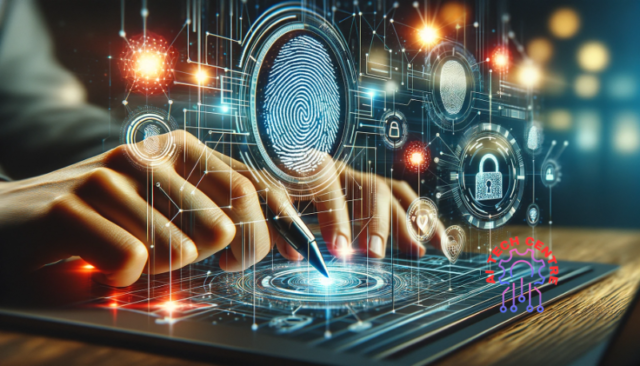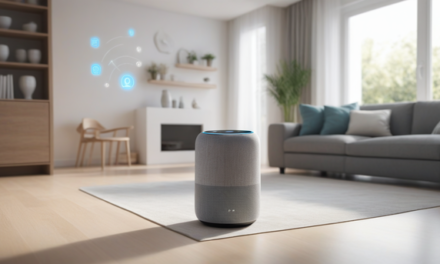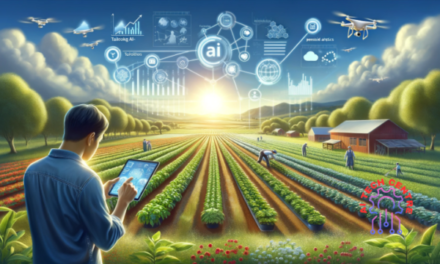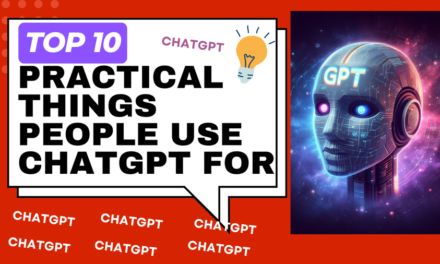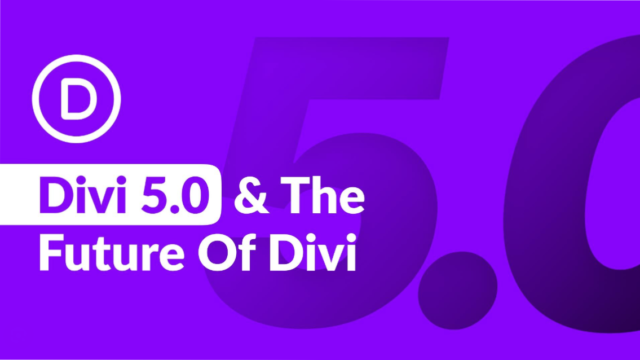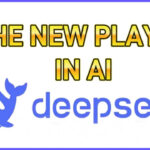Introduction
Support you’re scrolling through your social media feed, and you see a video of a celebrity endorsing some wild new product. Looks legit, right? But then, a thought crosses your mind: “Wait a minute… is that really them, or is this another one of those crazy AI-generated deepfakes?”
Yep, we live in a world where that’s a very real question. AI technology has come so far that it’s hard to tell what’s real from what’s artificially generated. And while the cool factor is off the charts, it’s also kind of terrifying. The last thing anyone wants is to fall for fake news or be misled by content that’s crafted by a machine. That’s why we need to talk about the growing importance of AI content standards—and more importantly, how collaboration between industry giants (looking at you, Facebook and friends) is helping to shape a future where what you see is really what you get.
Ready to dive in? Grab your virtual popcorn, and let’s break down why AI content standards are the unsung heroes of the digital age and how they can save us all from a world of AI-driven chaos.
Why Does Digital Authenticity Even Matter?
Alright, picture this. You’ve got the entire digital world at your fingertips. Everything you see, from memes to viral videos, comes from somewhere—often from people you know and trust. But with the rise of AI-generated content, things are getting tricky. You’re not just up against spam emails and bad Photoshop anymore; you’re dealing with deepfakes, altered videos, and even AI-generated audio that sounds so real, it’s almost impossible to spot the difference.
That’s where digital authenticity comes into play. When you click on a piece of content, whether it’s a viral tweet or a news article, you want to know it’s genuine. You don’t want to worry about being tricked by fake videos or misleading photos. And trust me, you’re not alone. Misinformation spreads like wildfire, and it doesn’t just mess with your head—it messes with entire industries, politics, and people’s lives.
So, yeah, authenticity matters. It’s not just about catching the latest trend or watching funny cat videos (although, who doesn’t love a good cat meme?). It’s about maintaining trust in what we see online. Because, honestly, if we can’t trust what we’re seeing, where does that leave us?
Industry Giants to the Rescue (Yes, Really)
Okay, so we’ve established that AI-generated content can be a real problem, and it’s not going away anytime soon. But here’s the good news: Big Tech knows it, too. That’s why companies like Facebook (or should I say Meta? It’s hard to keep track these days) are stepping up to the plate.
Facebook, alongside other industry heavyweights like Adobe, The New York Times, and even Twitter, has been making strides toward developing common standards for identifying AI-generated content. This is all part of a bigger push for transparency and accountability, which, let’s be honest, we could all use a bit more of in the digital space.
One of the leading efforts is the Content Authenticity Initiative (CAI), spearheaded by Adobe. This initiative is all about creating a standard that can track where digital content comes from and how it’s been altered. Think of it like a digital paper trail that shows you the origin and history of the content you’re consuming. And it’s not just some niche tech idea—big players are buying in, including Facebook. This means there’s a real chance we could see widespread adoption of these standards across multiple platforms. Score one for the good guys.
The Roadblocks: It’s Not All Sunshine and Rainbows
Of course, as with anything in tech, nothing’s ever as easy as it sounds. Standardizing AI content is kind of like trying to corral a herd of cats—it’s tricky, and there’s always something new to deal with.
First off, the technology is constantly evolving. One minute we think we’ve got a solid way to detect deepfakes, and the next, AI developers come up with an even sneakier way to generate them. It’s a constant game of cat and mouse, where the tech that creates AI content is racing ahead of the tech that can identify it. That means any standards we put in place have to be flexible enough to evolve with the technology—no small feat.
Then, there’s the ethical side of things. Sure, we want to tag AI-generated content to make sure people know what’s real and what’s fake, but we also don’t want to infringe on anyone’s privacy or intellectual property. Balancing transparency with respect for creators’ rights is like walking a tightrope. If we’re not careful, we could end up with rules that protect authenticity but invade personal privacy. Tricky stuff.
And don’t even get me started on the regulatory issues. The internet isn’t confined to one country, so having a universal set of standards is a nightmare when every government has its own rules. What works in the U.S. might not fly in Europe, and don’t even try to figure out where China stands. Let’s just say getting everyone on the same page is a monumental task, and that’s putting it mildly.
Making Progress: A Peek Behind the Curtain
But despite all the challenges, we’re making progress. For one, the CAI’s open standard for digital content attribution is a game-changer. By embedding metadata directly into digital files, we’re getting a behind-the-scenes look at where content comes from, who’s edited it, and how it’s been shared. It’s like a digital fingerprint that can’t be tampered with. Imagine being able to trace the origin of any photo or video you come across—that’s the future we’re heading toward.
And it’s not just Adobe that’s leading the charge. Facebook, along with a handful of other tech giants, has teamed up with the Partnership on AI to tackle the social impact of AI-generated content. Together, they’re working to create industry-wide benchmarks that will help us all navigate this wild west of AI tech. Think of it as a big, collaborative brain trust aimed at keeping us safe from AI-generated chaos.
So, Who Really Wins Here?
Good question. The answer is everyone. Well, almost everyone. Let’s break it down.
Content Creators
If you’re a creator, these new standards mean you’ll get the recognition you deserve. Imagine a world where your work can’t be easily stolen or misattributed because there’s a clear, traceable record of where it came from. You’ll be able to prove that your content is original, which is a big win for anyone who’s ever had their work reposted without credit. And hey, intellectual property theft? Not on your watch.
Consumers
Then there’s you, the consumer. These new standards will give you peace of mind when you’re scrolling through your feed, knowing that the content you’re seeing is legit. You won’t have to worry about falling for fake news or getting duped by cleverly crafted AI-generated fakes. Finally, you’ll be able to trust your own eyes again (well, almost). Plus, it’ll be easier to spot those shady accounts trying to spread misinformation.
Digital Platforms
And let’s not forget the platforms themselves. Facebook, Twitter, YouTube—all of them stand to benefit from a more regulated digital space. By adopting these standards, they’ll be able to better moderate their content, keeping their users safe from the worst of the internet’s misinformation. And, as a bonus, it’ll make these platforms feel more trustworthy, which is something they could all use right now. Here is Facebook’s Community Standard, which includes AI-generated.
What’s Next? The Road Ahead
So, where do we go from here? Well, it’s all about keeping up the momentum. The collaboration we’re seeing from industry leaders is promising, but we’re not out of the woods yet. There’s still a lot of work to be done in refining these standards, especially as AI technology continues to evolve.
It’s going to take all hands on deck to ensure that AI content standards stay relevant and effective. Tech companies will need to keep innovating, governments will need to step up their game with smarter regulations, and creators will need to embrace these standards to protect their work. It’s a team effort, but if we all pull together, we can create a digital world where authenticity reigns supreme.
AI content standards: A Future Built on Trust
In conclusion, we have seen that AI content standards are all about trust—trust in the content we create, consume, and share. It’s a huge task, but with the right collaboration and innovation, we can build a digital ecosystem that’s as authentic as it is cutting-edge.
So, next time you’re scrolling through your feed and wondering if that video of a famous actor moonwalking through space is real, just remember: thanks to the efforts of companies like Facebook and initiatives like the Content Authenticity Initiative, we’re one step closer to a future where we can finally trust what we see online.
Now, let’s go find some cat videos we can actually believe in, shall we?
Here are some Questions that might arise from the insights and discussions in this blog:
What are AI content standards
AI content standards refer to the guidelines and protocols established to ensure the authenticity and integrity of digital content. These standards help in identifying, tagging, and tracking AI-generated content across various platforms, promoting transparency and accountability in the digital space.
Why is there a need for AI content standards?
With the rapid advancement of AI technologies, it’s becoming increasingly challenging to differentiate between authentic and AI-generated content. This poses risks of misinformation, intellectual property theft, and privacy violations. AI content standards are needed to preserve the authenticity and trustworthiness of digital content.
Who is involved in the creation of these AI content standard?
The challenges include keeping up with the rapidly evolving AI technology, ensuring the privacy and intellectual property rights are protected, and dealing with the regulatory discrepancies across different jurisdictions.
What are some of the challenges in establishing AI content standards?
With the rapid advancement of AI technologies, it’s becoming increasingly challenging to differentiate between authentic and AI-generated content. This poses risks of misinformation, intellectual property theft, and privacy violations. AI content standards are needed to preserve the authenticity and trustworthiness of digital content.
How can AI content standards impact content creator
AI content standards can help content creators protect and assert their intellectual property rights. By ensuring that digital content can be reliably traced back to its source, creators can receive proper attribution and recognition for their work.
What benefits do AI content standards offer to consumers?
Consumers benefit from AI content standards through increased transparency and the ability to verify the authenticity of digital content. This empowers consumers to make informed decisions and builds trust in digital media.
How do digital platforms stand to benefit from adopting AI content standards
Digital platforms can enhance their content moderation efforts, protect their users from deceptive content, and mitigate the risks associated with the spread of misinformation. Adopting these standards can help in maintaining a safe, trustworthy, and regulated digital environment.
What is the future of digital authenticity with the implementation of AI content standards?
The future of digital authenticity looks promising with the implementation of AI content standards. As these standards become more widespread and robust, digital content is expected to become more transparent, reliable, and trustworthy, fostering a safer and more equitable digital landscape for all stakeholders
Tags:
Digital Authenticity, AI Content, Industry Collaboration, Technical Standards, Video Integrity, Audio Transparency, Content Integrity, Standardization Challenges, Stakeholder Impact, Facebook Initiative, Misinformation Risks, Deepfakes Detection, Content Attribution, Creator Rights, Consumer Trust, Platform Regulation, Metadata Embedding, AI Evolution, Ethical Balance, Regulatory Harmonization

